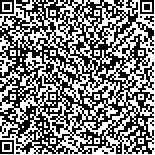张芳,谢博多,郭华平,等.连续Theta爆发式经颅磁刺激治疗脑卒中后失语症的疗效观察[J].中华物理医学与康复杂志,2025,47(9):804-808
扫码阅读全文

|
| 连续Theta爆发式经颅磁刺激治疗脑卒中后失语症的疗效观察 |
|
| |
| DOI:10.3760/cma.j.cn421666-20250211-00129 |
| 中文关键词: 连续Theta爆发式经颅磁刺激 脑卒中 失语症 生活质量 言语语言疗法 |
| 英文关键词: Theta burst stimulation Stroke Aphasia Quality of life Speech therapy Language therapy |
| 基金项目:河北省医学科学研究课题计划资助(20240836) |
|
| 摘要点击次数: 542 |
| 全文下载次数: 461 |
| 中文摘要: |
| 目的 观察连续Theta爆发式经颅磁刺激(cTBS)治疗脑卒中后失语症(PSA)患者的临床疗效。 方法 采用随机数字表法将46例PSA患者分为观察组及对照组,每组23例。2组患者均给予常规康复干预及言语语言治疗,观察组患者在此基础上针对健侧脑区额下回(IFG)、颞上回(STG)及额上回(SFG)语言功能区给予cTBS多靶点刺激,对照组则针对上述脑区给予假磁刺激,每天治疗1次,每周治疗5 d。于治疗前、治疗3周后分别采用中国康复研究中心失语症检查法(CRRCAE)、波士顿诊断性失语症检查法(BDAE)、简易智力状况检查量表(MMSE)及脑卒中失语症生活质量量表(SAQOL-39)对2组患者进行疗效评定。 结果 治疗后2组患者CRRCAE量表-听理解、复述、说、出声读、阅读5项评分、BDAE、MMSE及SAQOL-39评分均较治疗前明显提高(P<0.05);并且治疗后观察组CRRCAE量表-听理解 [(112.7±8.9)分]、复述[(115.7±16.0)分]、说[(99.9±6.2)分]、出声读[(98.2±14.1)分]、阅读评分[(86.6±8.1)分]、BDAE评分[3.0(3.0,4.0)分]、MMSE评分[21.0(20.0,24.0)分]及SAQOL-39评分[(112.9±21.9)分]亦显著优于同期对照组水平(P<0.05)。 结论 cTBS多靶点干预可有效改善PSA患者言语功能及认知功能,进一步提高患者生活质量,该联合疗法值得临床推广、应用。 |
| 英文摘要: |
| Objective To observe the clinical efficacy of continuous theta burst stimulation in the treatment of post-stroke aphasia (PSA). Methods Forty-six patients with post-stroke aphasia were randomly divided into an observation group and a control group, with 23 cases in each group. In addition to conventional rehabilitation and speech-language therapy, the observation group received daily theta burst stimulation (cTBS) targeting the contralesional inferior frontal gyrus, the superior temporal gyrus, and the superior frontal gyrus. The control group received sham stimulation over the same areas. The treatment was 5 days per week for 3 weeks. Before and after the treatment, both groups were evaluated using the China Rehabilitation Research Center′s aphasia examination method (CRRCAE), the Boston diagnostic aphasia examination (BDAE), the brief mental scale (MMSE), and the Stroke Aphasia Quality of Life scale (SAQOL-39). Results After the treatment, intra-group comparison showed significantly greater improvements among the observation group in terms of their average CRRCAE listening comprehension (112.74±8.935), repetition (115.74±16.015), speaking (99.91±6.273), oral reading (98.22±14.087), and reading (86.57±8.101) sub-scores and their average BDAE [3.00 (3.00, 4.00)], MMSE [21.00 (20.00, 24.00)] and SAQOL-39 (112.96±21.995) scores. Conclusions Continuous theta burst transcranial magnetic stimulation can effectively improve the speech, cognition and life quality of persons with post-stroke aphasia. This therapy is worthy of clinical application and promotion. |
|
查看全文
查看/发表评论 下载PDF阅读器 |
| 关闭 |
|
|
|